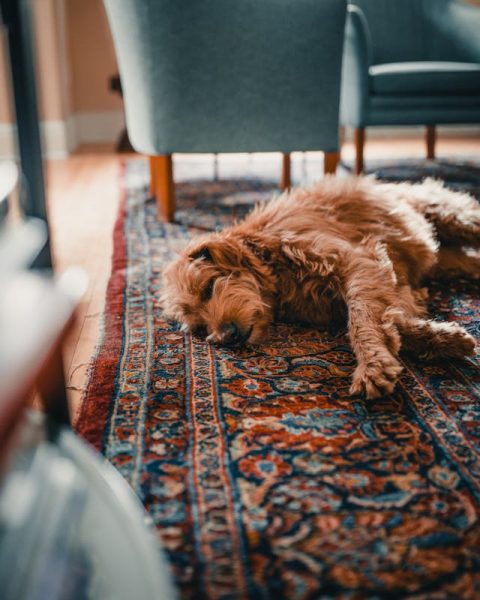Choosing the right material for custom rugs can be the key to creating a beautiful and long-lasting piece for your home. Wool is one of the best materials for making durable custom rugs. Known for its natural resilience and luxurious feel, wool rugs can withstand heavy foot traffic and repel stains effectively. It’s a versatile choice that can fit various areas of the home, adding both comfort and style.
Another popular option is synthetic materials like nylon and polypropylene, which offer affordability and durability. They are especially suitable for high-traffic areas and are easy to clean. For those looking for something more specific and tailored, you can customize a perfect natural fiber or synthetic area rug from a great selection of options available.
Lastly, natural fibers like jute and sisal bring a rustic charm and are environmentally friendly. Though they might not be as plush as wool or synthetic options, they provide a strong and engaging texture perfect for unique spaces. Whether you are looking for a durable runner or a large living room centerpiece, exploring different materials helps in crafting the ideal custom rugs for your space.

Choosing the Right Materials for Durability and Comfort
Selecting materials for custom rugs is key to ensuring both durability and comfort. Here, the most suitable options for natural fibers, synthetic materials, and specialty rugs are outlined.
Natural Fiber Options
Natural fibers offer both durability and a refined appearance. Wool rugs are renowned for their exceptional softness and moisture resistance. Wool’s resilience makes it ideal for high-traffic areas. Cotton rugs provide a softer touch and are easier to clean, but may not last as long as wool.
Jute rugs deliver a unique, rustic look and are eco-friendly. However, jute may not stand up well in very busy spaces. Silk rugs are luxurious and have a beautiful sheen, providing elegance, though they aren’t as durable as wool or cotton.
Synthetic Material Advantages
Synthetic fibers are often chosen for their cost-effectiveness and ease of maintenance. Polyester rugs are slightly softer and more absorbent but less durable. Polypropylene rugs are favored for their stain resistance and low cost. They can mimic the appearance of wool while being more budget-friendly.
Nylon rugs excel in abrasion resistance, making them suitable for high-traffic areas. These rugs are typically lightweight and fade-resistant, ideal for spaces exposed to sunlight. Synthetic materials also tend to be hypoallergenic, offering comfort for sensitive individuals.
Specialty Rugs and Unique Materials
Specialty rugs crafted from unique materials can improve the aesthetic appeal and luxury of a room. Leather rugs, for instance, add a touch of sophistication but might require more maintenance to preserve their texture. Sheepskin rugs offer unmatched softness, perfect for cozying up any space, but they may not endure heavy foot traffic well.
Seagrass and sisal rugs are durable and naturally stain-resistant, suitable for both high and low-traffic areas. Hide rugs bring a rustic elegance and unique texture, still maintaining a durable quality. These specialty options stand out for their distinct looks, adding character to any interior space.

Practical Considerations for Custom Rug Creation
When creating custom rugs, it is essential to consider maintenance, the balance between design and function, and cost. These factors will ensure that the rug is not only aesthetically pleasing but also durable and practical for everyday use.
Maintenance and Care
Rug materials impact how easy they are to clean and maintain. For example, wool rugs offer durability and comfort but can be prone to shedding. They require regular vacuuming and occasional professional cleaning. On the other hand, synthetic rugs like nylon or polyester are easy to clean and stain-resistant, making them suitable for high-traffic areas.
Consider materials used to make rugs that are easy to clean to ensure longevity. Rugs in high-traffic areas, like living rooms, should be durable and quick to clean, whereas those in low-traffic areas, like bedrooms, might prioritize comfort.
Design and Functional Balance
Balancing aesthetic appeal with functionality is necessary. Custom rugs should complement the room’s ambiance and furniture while being functional. For example, a light-colored, plush rug may look beautiful in a living space but may not be practical for high-traffic areas due to dirt and wear.
Moreover, the design should not compromise the rug’s durability. For instance, intricate patterns may not hold up well under heavy use compared to simpler designs. Choose rug materials that offer both aesthetic appeal and functionality to ensure the rug fits well with the home decor.
Budget and Cost-Effectiveness
Budget is an important factor when choosing materials and designing a custom rug. Some materials like natural fibers (e.g., wool, silk) are more expensive but offer durability and comfort. Synthetic fibers like nylon and polyester are more affordable and still offer good longevity and ease of cleaning.
An affordable custom rug should fit within your price range without sacrificing too much on quality. When planning, consider the long-term cost-effectiveness of the rug, as cheaper materials might need replacement sooner, potentially costing more in the long run. Evaluate the balance between the initial cost and the expected lifespan to make an informed decision.
Conclusion
Choosing the right material for a custom rug is important for durability and style. Natural fibers like wool offer softness and resilience. Synthetic options like nylon and polyester are stain-resistant and budget-friendly. Bamboo fiber blends provide eco-friendly and silky textures. Each material comes with unique benefits and considerations, making it essential to select based on specific needs.


